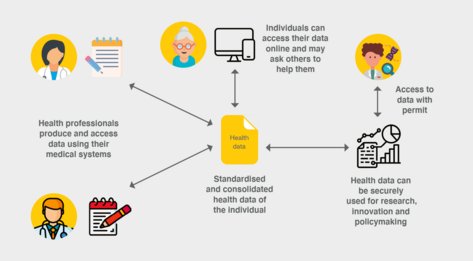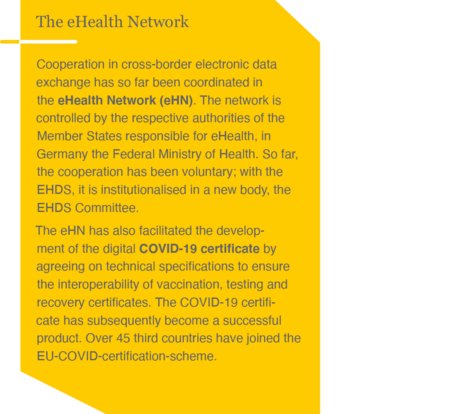Data exchange via MyHealth@EU – What is behind it?
For over seven years now, a number of Member States have been working voluntarily to establish the basis for the exchange of medical information in the EU.
ed* Nr. 02/2022 – Chapter 3
The MyHealth@EU data infrastructure was launched in 2015, at that time still under the name eHealth Digital Service Infrastructure (eHDSI). Via MyHealth@EU, personal health data is exchanged securely and efficiently within the EU. The interfaces with the respective national systems are formed by national contact points for electronic health services (NCPeH); in Germany, this is the German Liaison Agency Health Insurance – International which is a part of the organisational structure of the National Association of Statutory Health Insurance Funds (GKV-Spitzenverband).
MyHealth@EU data infrastructure

Ten Member States are now actively participating in the exchange of ePrescriptions and digital patient summaries via MyHealth@EU. With the digital ePrescription, insured persons can not only benefit on a national level, but also already the prescribed medicines within the neighbouring country at the pharmacy. The digital patient summaries – not to be confused with the complete e-health record2 – contains all emergency-relevant information of an insured person, for example information on previous illnesses or allergies. The first exchange of an electronic prescription took place between Estonia and Finland in January 2019. Seven years after the start of the project, there are still differences in the intensity of the exchange. At present, not all participating Member States can send and receive ePrescriptions and digital patient summaries abroad in the same way. In addition, the number of pharmacies and hospitals already integrated into the data infrastructure varies.3 So far, a total of around 66,700 ePrescriptions and 1,800 digital patient summaries have been exchanged in the EU. Germany would like to be able to exchange at least digital patient summaries in 2023.
With the EHDS, all Member States are to be connected to the MyHealth@EU data infrastructure by 2025. In addition, further data is to be exchanged in the future, such as laboratory results, medical images and discharge reports. To this end, the EHDS lays down uniform rules on standardisation and interoperability.

The European Health Record is at the centre
The central instrument for primary data exchange is the European Health Record (EHR). By 2025, the European Commission wants all citizens in the EU to have access to their EHR and to be able to make their health data available across borders. For this purpose, a uniform exchange format ismandatory within the framework of the EHDS. Through a self-certification system, EHR systems should prove that they meet the requirements for interoperability and security in order to avoid fragmentation and inequalities in access to eHealth services and data transmission. If the European Commission has its way, it will also be possible in future to feed data from wellness applications, such as fitness wristbands, into health records.
The impact this has on data quality is debated. Doctors use EHR data for their treatment decisions and must be sure that the data is valid. Wellness apps are not regulated to the same extent as medical devices. There is a great potential for error when recording data.

